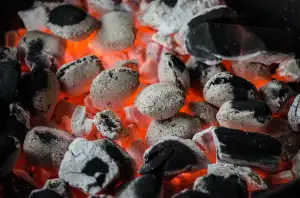Unveiling the Makanai Magic: A Culinary Journey to Discover the Authentic Flavors

Makanai, a term rooted in Japanese culinary culture, refers to the traditional practice of cooking simple yet flavorful meals using leftover or readily available ingredients. Historically, makanai originated in the Edo period when geisha houses provided meals for their staff using limited resources. Over time, this concept has evolved into a celebrated culinary tradition that emphasizes creativity and resourcefulness in the kitchen. Today, makanai embodies the essence of making delicious dishes with humble ingredients, showcasing the beauty of simplicity and ingenuity in cooking.
History and Origins:
The term "makanai" originates from Japan, where it refers to the meals prepared for geisha and apprentices in the traditional entertainment districts. Historically, makanai dishes were simple yet flavorful, utilizing seasonal ingredients to create nourishing meals for the entertainers. Over time, the tradition of makanai has evolved beyond its original purpose and has become synonymous with home-style cooking that emphasizes freshness and simplicity. This culinary tradition highlights the importance of using quality ingredients and techniques to bring out the natural flavors of each dish.
Signature Dishes:
Makanai cuisine boasts a rich array of dishes that have stood the test of time, captivating taste buds with their unique flavors and textures. Among the most renowned dishes is "Oyakodon," a comforting one-bowl meal consisting of succulent chicken simmered in a savory broth with onions and eggs, served over steamed rice. Another favorite is "Nikujaga," a hearty stew featuring tender beef, potatoes, and vegetables cooked in a sweet soy sauce-based broth. For those craving something crispy, "Karaage" offers bite-sized marinated chicken pieces deep-fried to perfection, resulting in a crunchy exterior and juicy interior. These dishes exemplify the essence of makanai cuisine – simple yet deeply satisfying creations that celebrate the beauty of fresh ingredients and meticulous preparation techniques.
Regional Variations:
Makanai dishes exhibit diverse variations across regions, reflecting local culinary traditions and ingredients. In Japan, the Kansai region is known for its savory takikomi gohan, a seasoned rice dish cooked with vegetables and proteins. On the other hand, the Tohoku region boasts its hearty nabe hot pot, featuring seasonal ingredients like salmon and root vegetables. Moving to Korea, makanai takes the form of bibimbap, a colorful bowl of mixed rice topped with vegetables, meat, and spicy gochujang sauce. Each region's unique flavors and cooking techniques contribute to the rich tapestry of makanai cuisine.
Health Benefits:
Makanai cuisine offers a plethora of health benefits due to its emphasis on fresh, seasonal ingredients and simple cooking techniques. Rich in vitamins, minerals, and antioxidants, makanai dishes provide a nutritious boost to the body. For example, dishes like miso soup are known for their probiotic properties that support gut health and boost immunity. Additionally, the use of lean proteins such as fish and tofu in makanai recipes promotes muscle growth and overall well-being. The incorporation of a variety of vegetables ensures a good intake of fiber, essential for digestive health. By enjoying makanai cuisine, individuals can savor delicious meals while reaping the rewards of a balanced and nourishing diet.
Tips for Cooking Makanai at Home:
1. Start with Fresh Ingredients: The key to authentic makanai cuisine lies in using fresh, high-quality ingredients. Seek out local markets or specialty stores to source the best produce, meats, and spices for your dishes.
2. Master Basic Techniques: Understanding traditional cooking techniques such as simmering, grilling, and stir-frying is essential for preparing makanai dishes. Practice these methods to enhance the flavors of your creations.
3. Balance Flavors: Makanai cuisine often balances sweet, savory, sour, and umami flavors harmoniously in a single dish. Experiment with different seasonings and ingredients to achieve a well-rounded taste profile.
4. Respect Tradition: While there's room for creativity in cooking makanai dishes, it's crucial to respect the roots of the cuisine. Stay true to traditional recipes and cooking methods for an authentic experience.
5. Embrace Simplicity: Makanai dishes are known for their simplicity and focus on highlighting the natural flavors of ingredients. Avoid overcomplicating recipes and let the freshness of the ingredients shine through.
6. Invest in Quality Cookware: Invest in good quality pots, pans, and utensils that can withstand high heat and long cooking times typical in makanai cuisine. This will ensure even cooking and better flavor development.
By following these tips, home cooks can embark on a flavorful culinary journey exploring the rich tradition of makanai cuisine right in their own kitchens.
**Conclusion:**
In conclusion, the culinary journey through the world of Makanai has been a delightful exploration of authentic flavors and traditions. From its humble origins as a meal for geisha in Kyoto to its modern-day presence in various kitchens worldwide, Makanai cuisine embodies a rich tapestry of history and innovation. By embracing Makanai dishes, one not only experiences a burst of unique flavors but also gains insight into the cultural heritage and culinary expertise that define this tradition.
As we bid farewell to this gastronomic adventure, let us remember to infuse our own cooking with the essence of Makanai - simplicity, freshness, and respect for quality ingredients. Whether you are a seasoned chef or an amateur cook, there is always room at the table for Makanai magic. So go ahead, explore new recipes, experiment with different flavors, and savor every bite as you embark on your own journey to embrace the freshness and authenticity that Makanai cuisine has to offer.
Published: 04. 04. 2024
Category: Recipes



